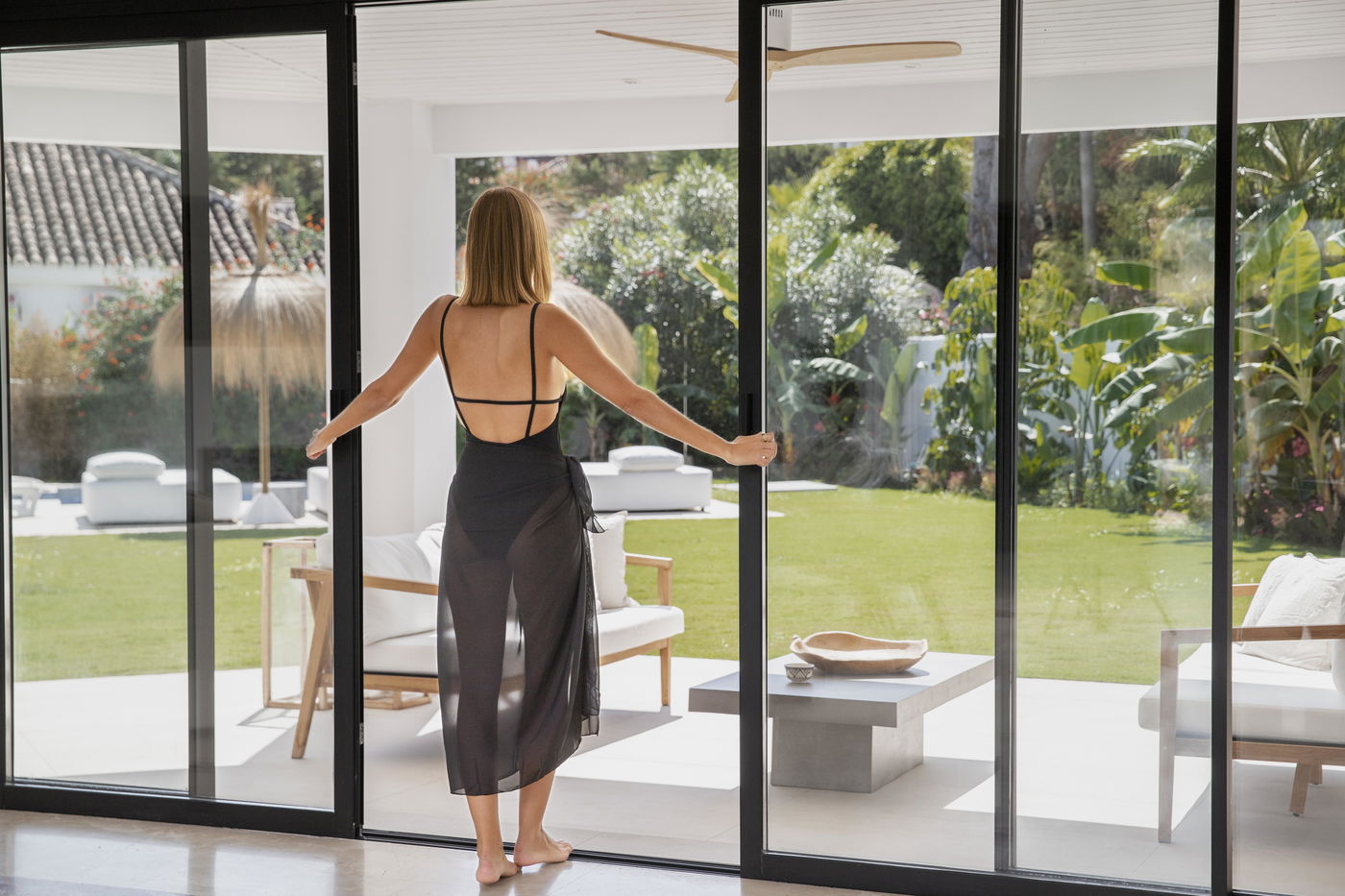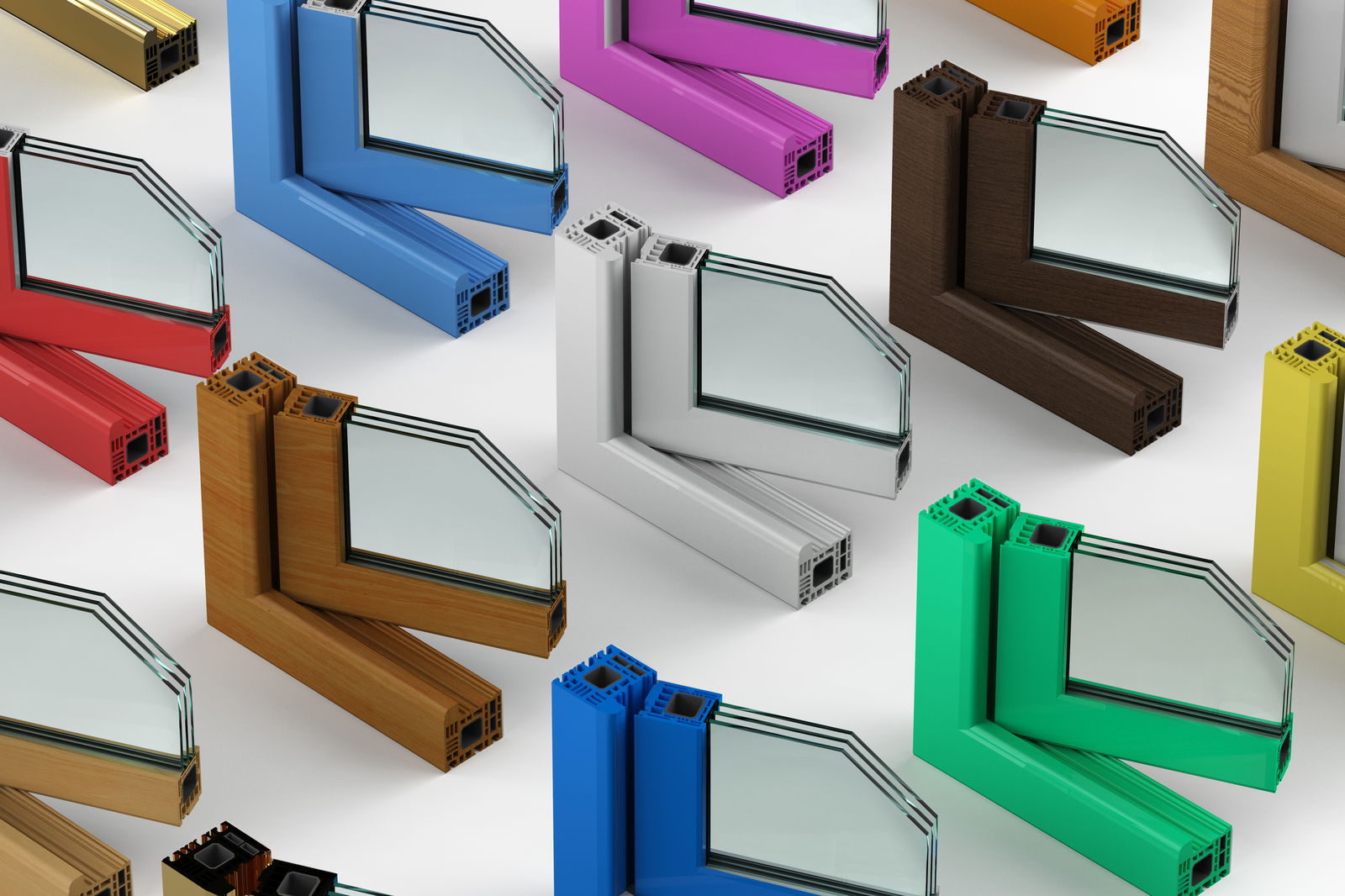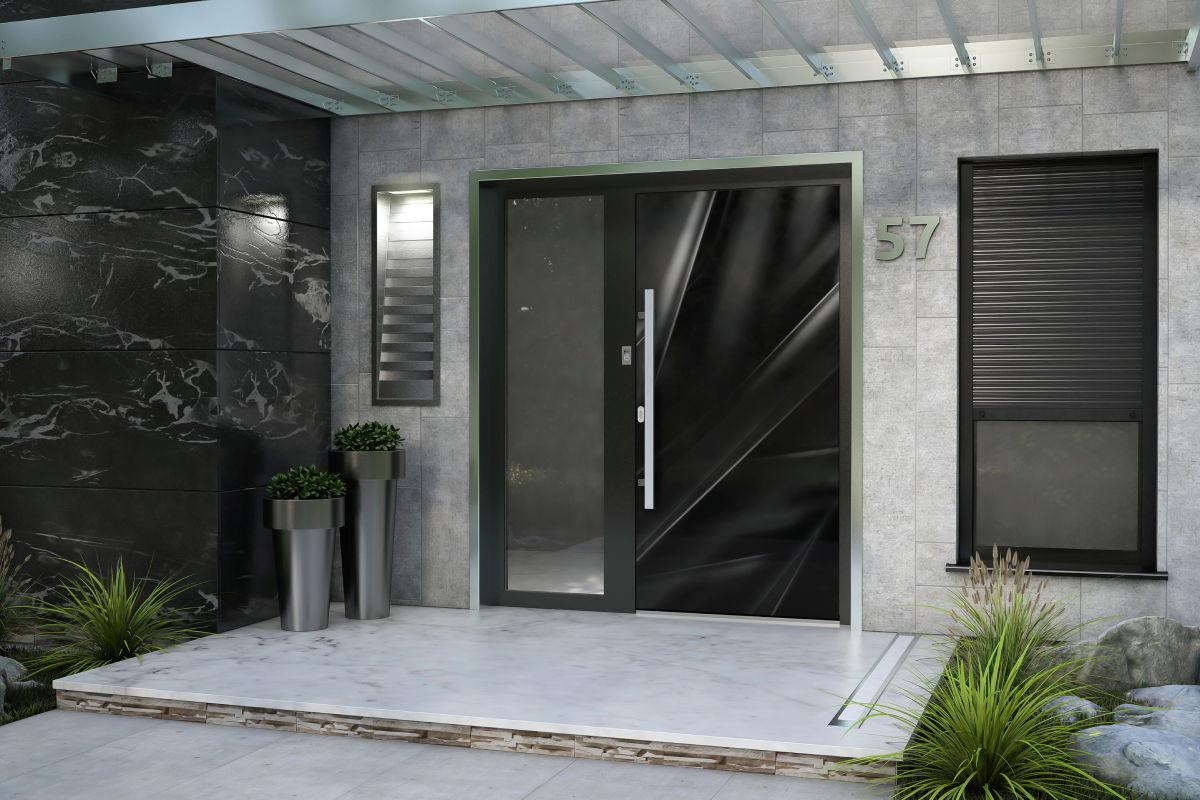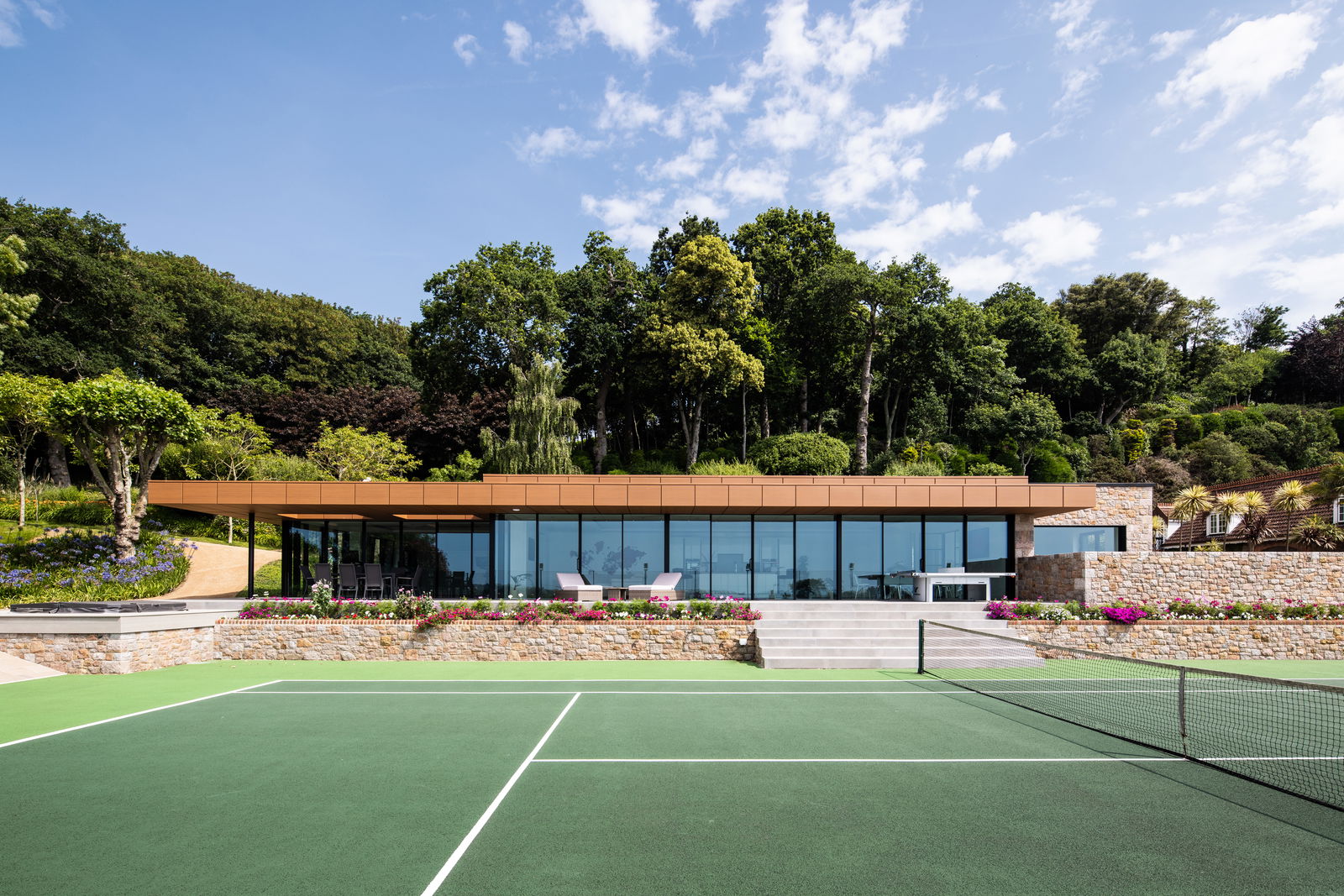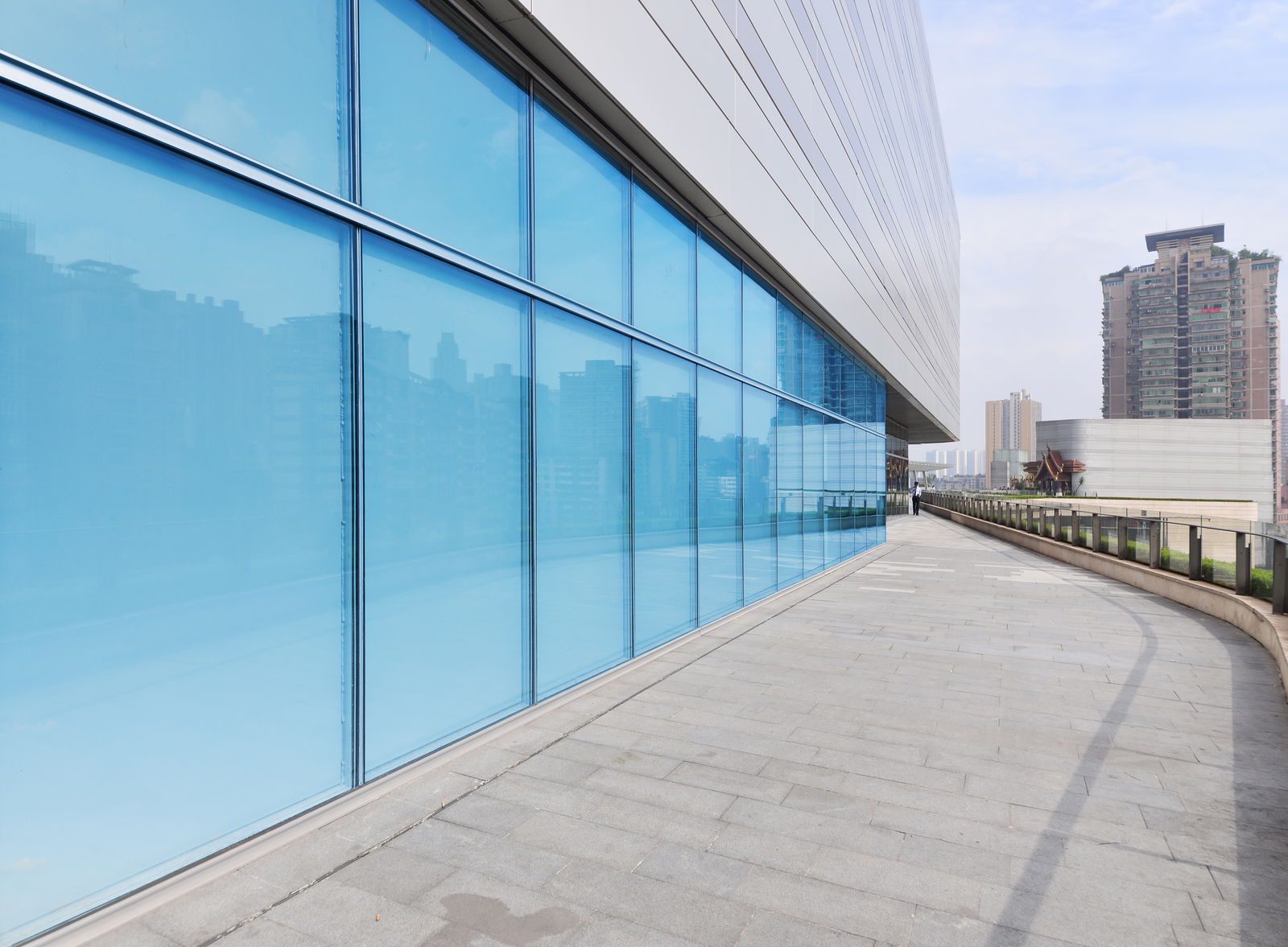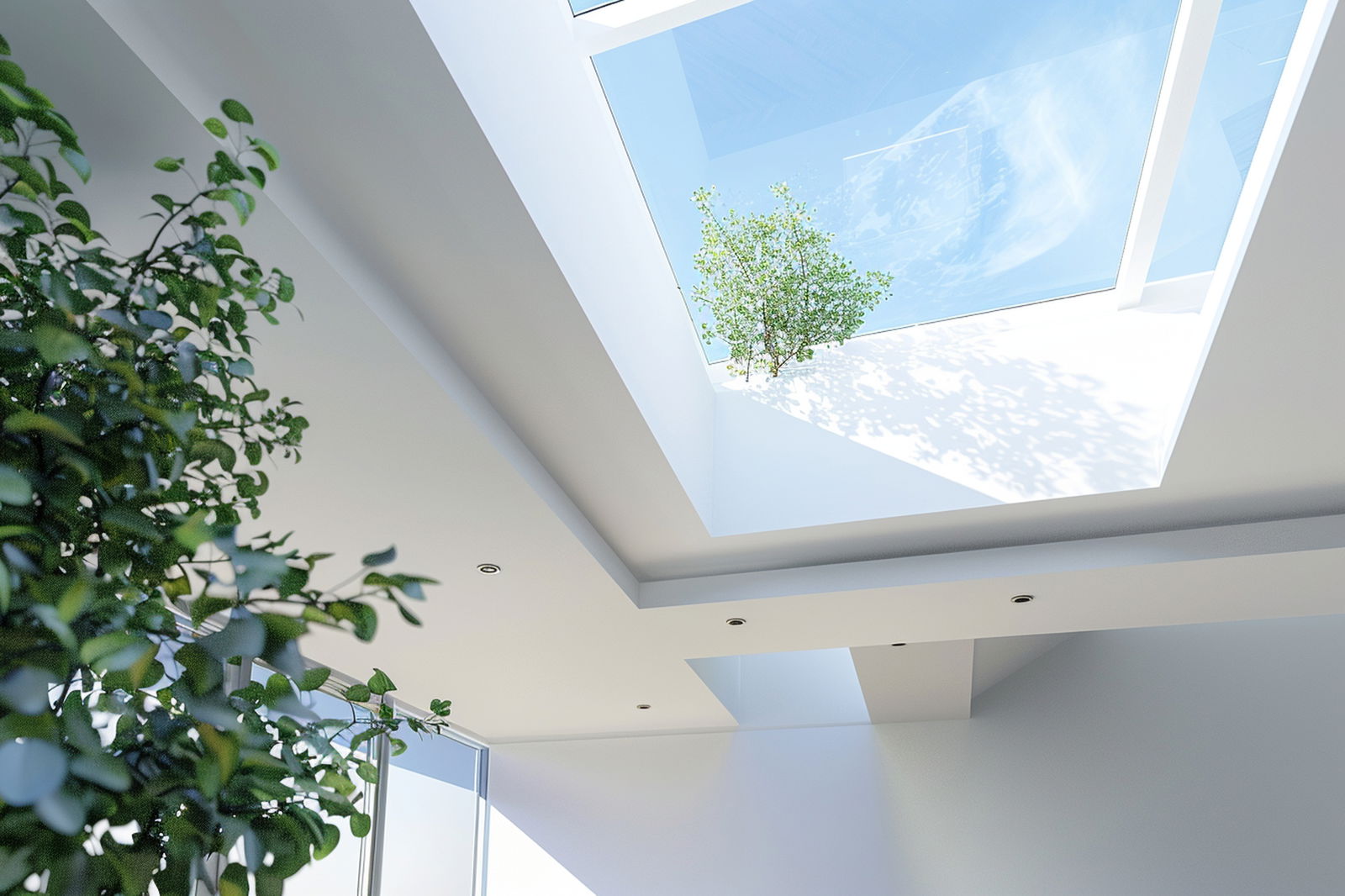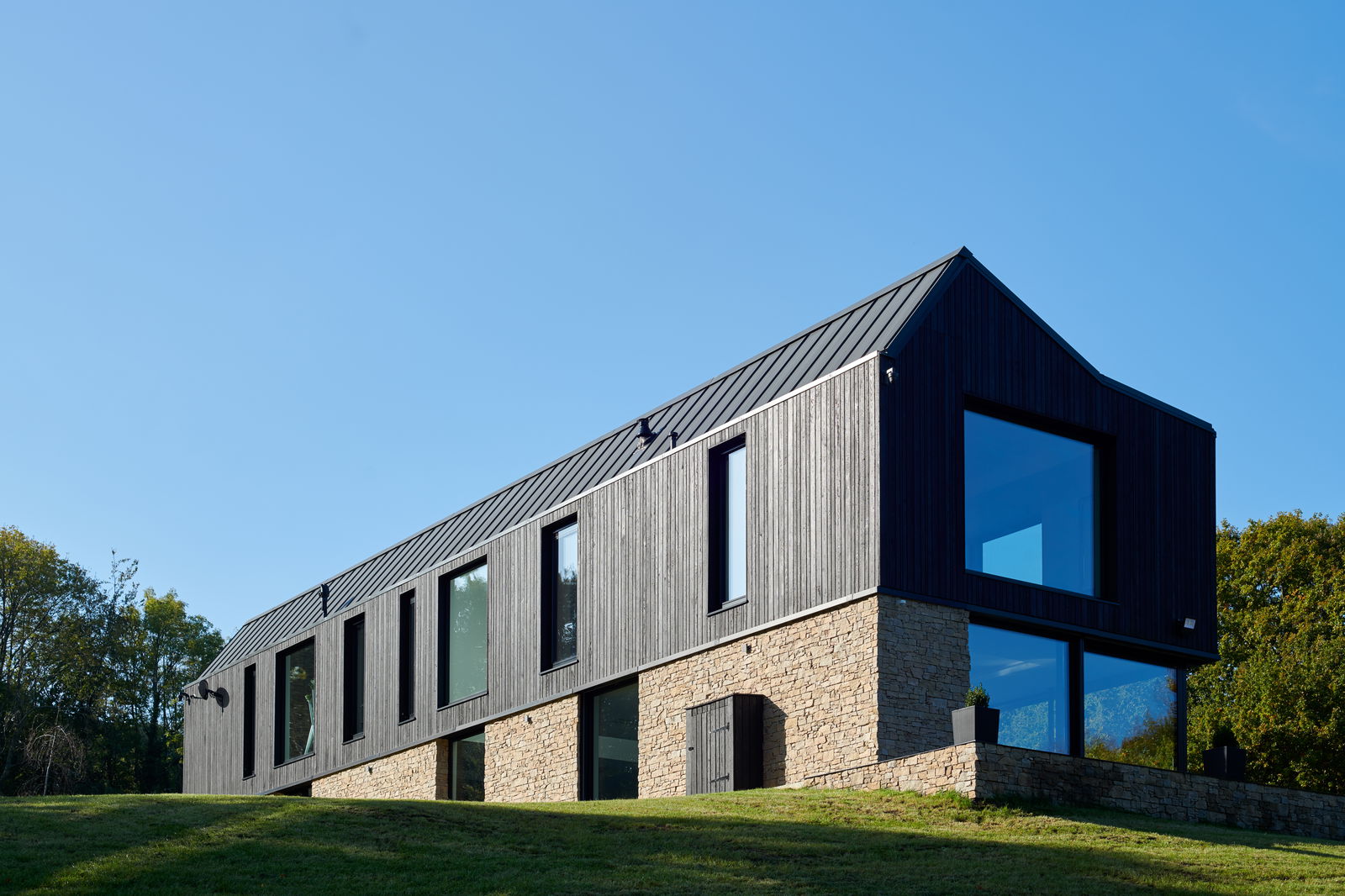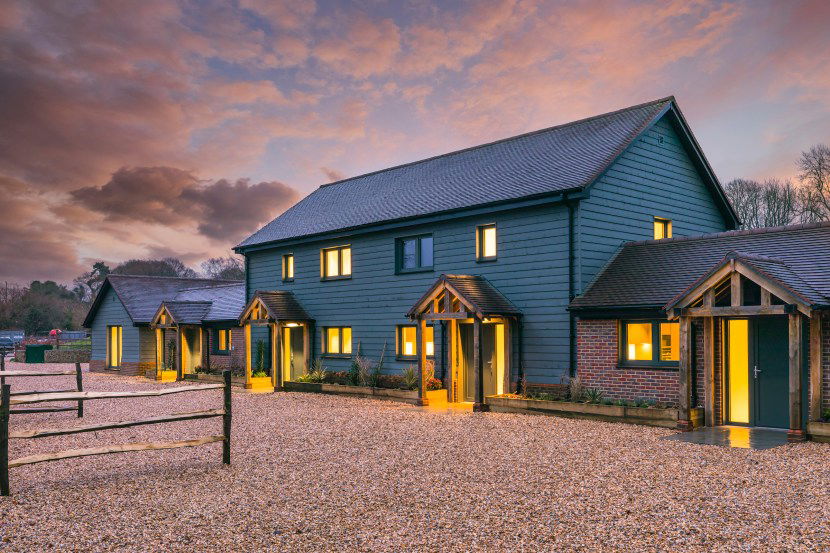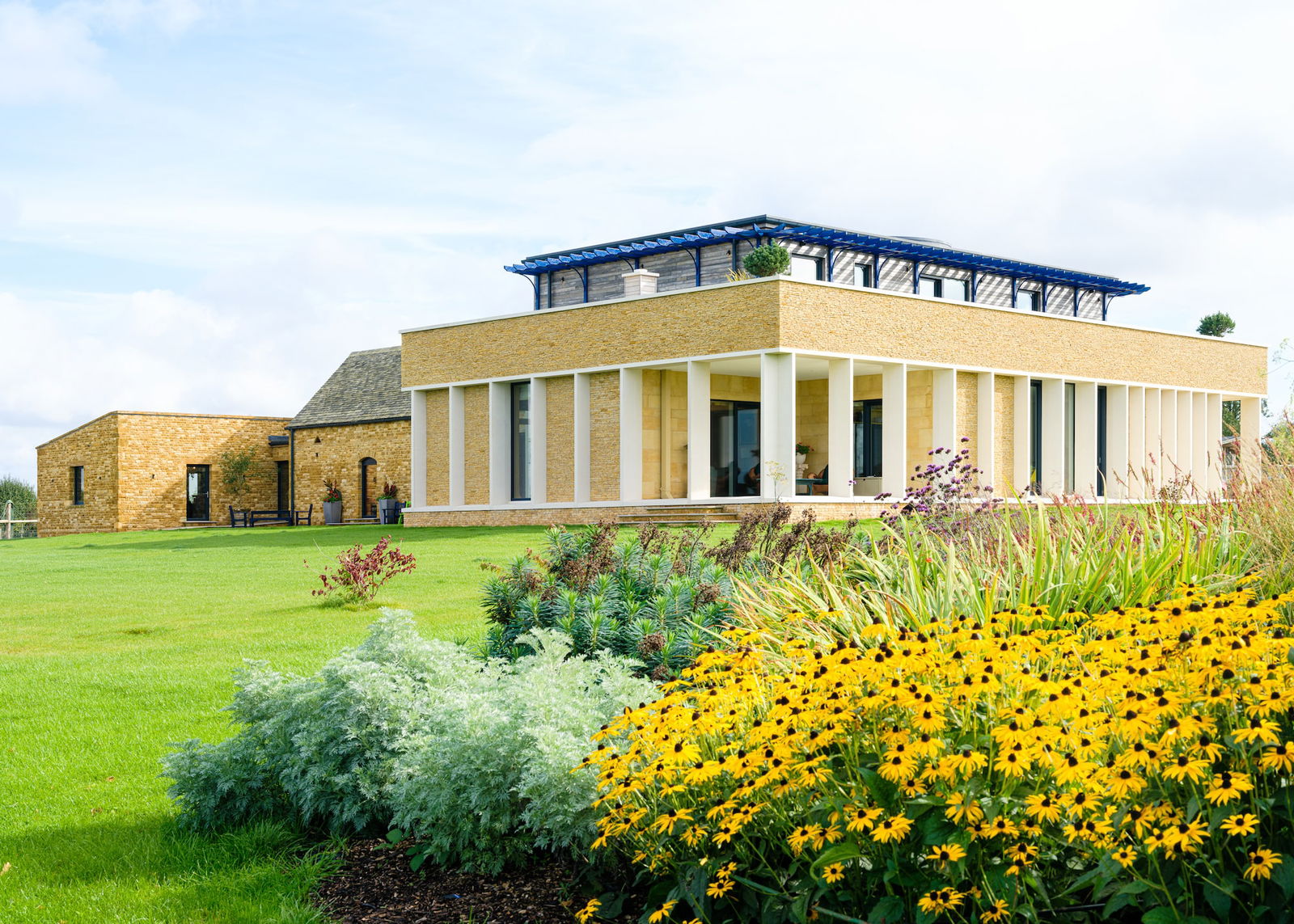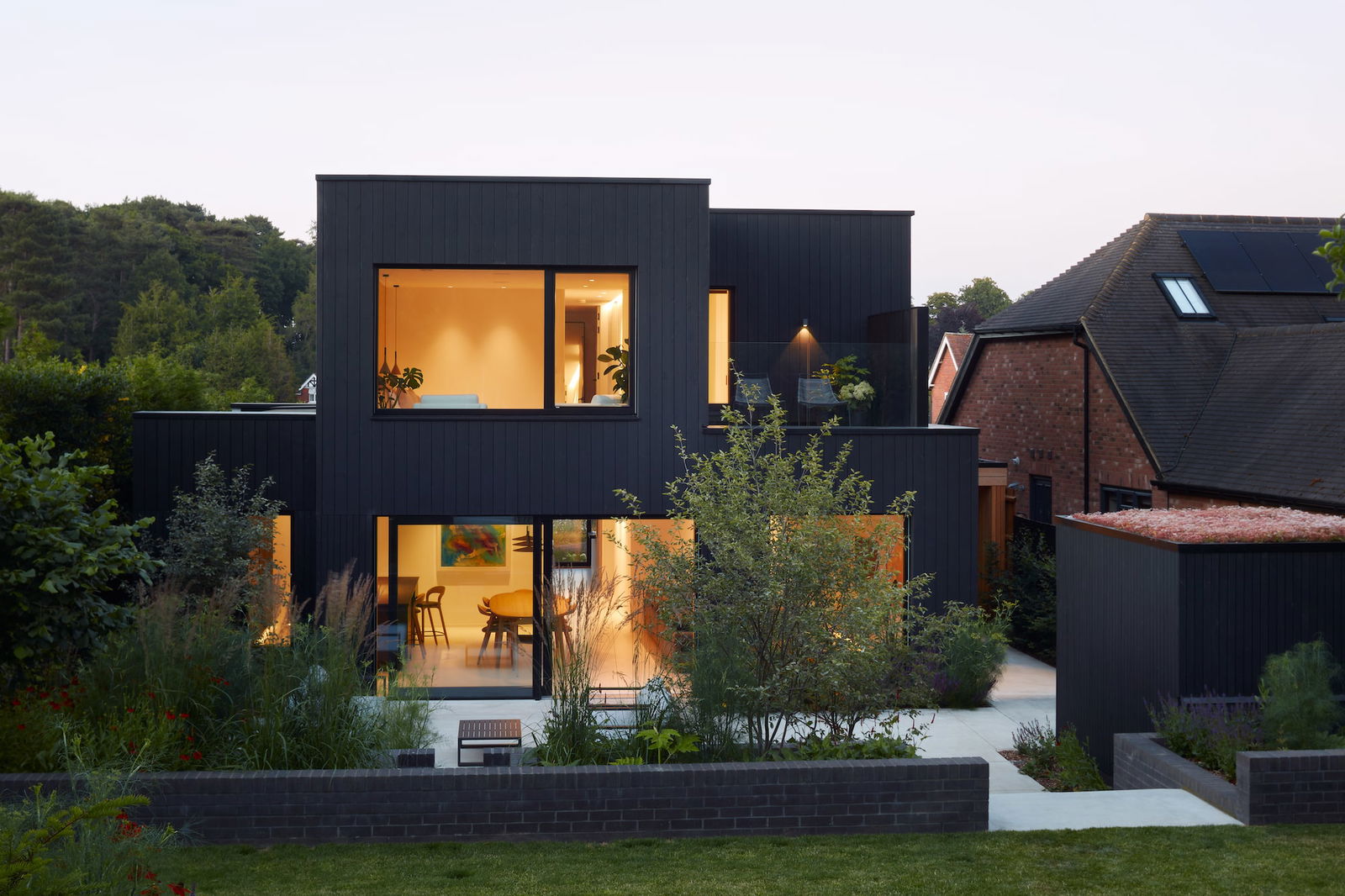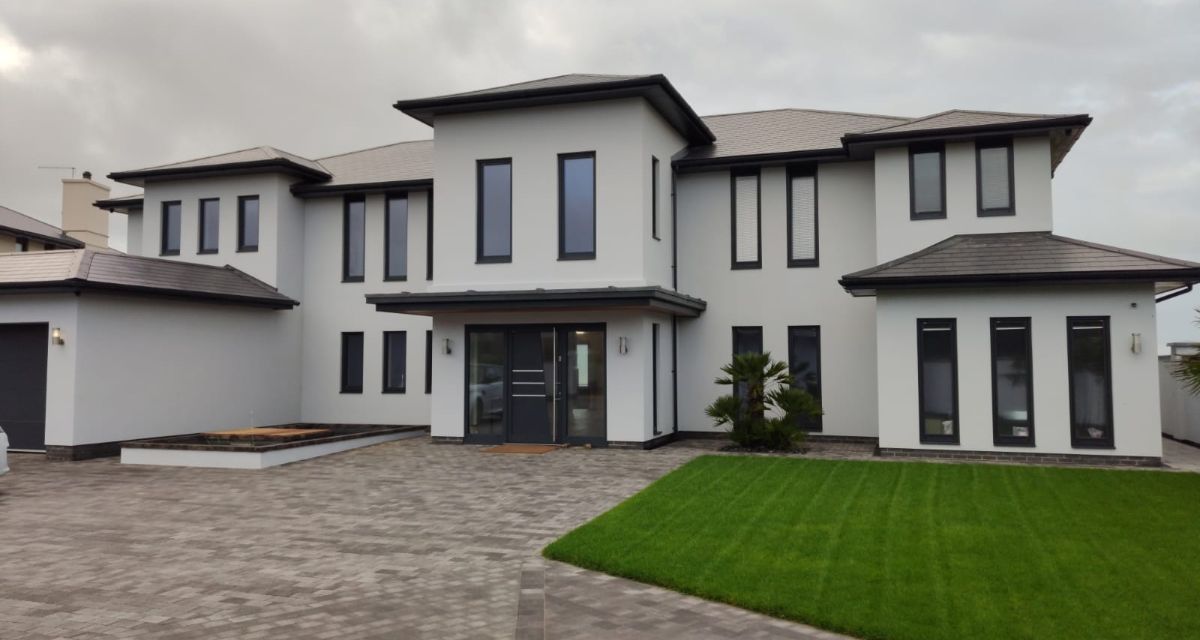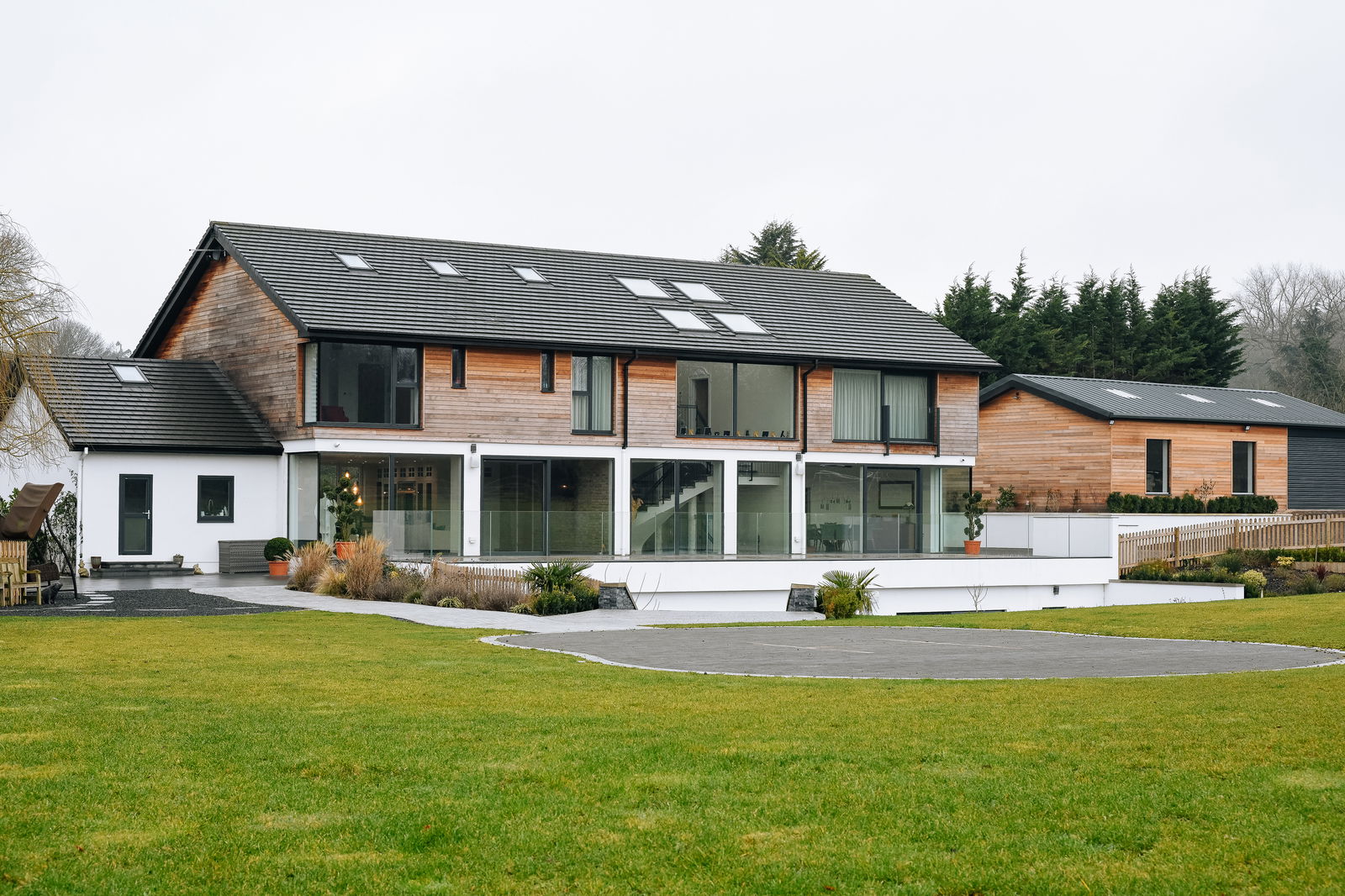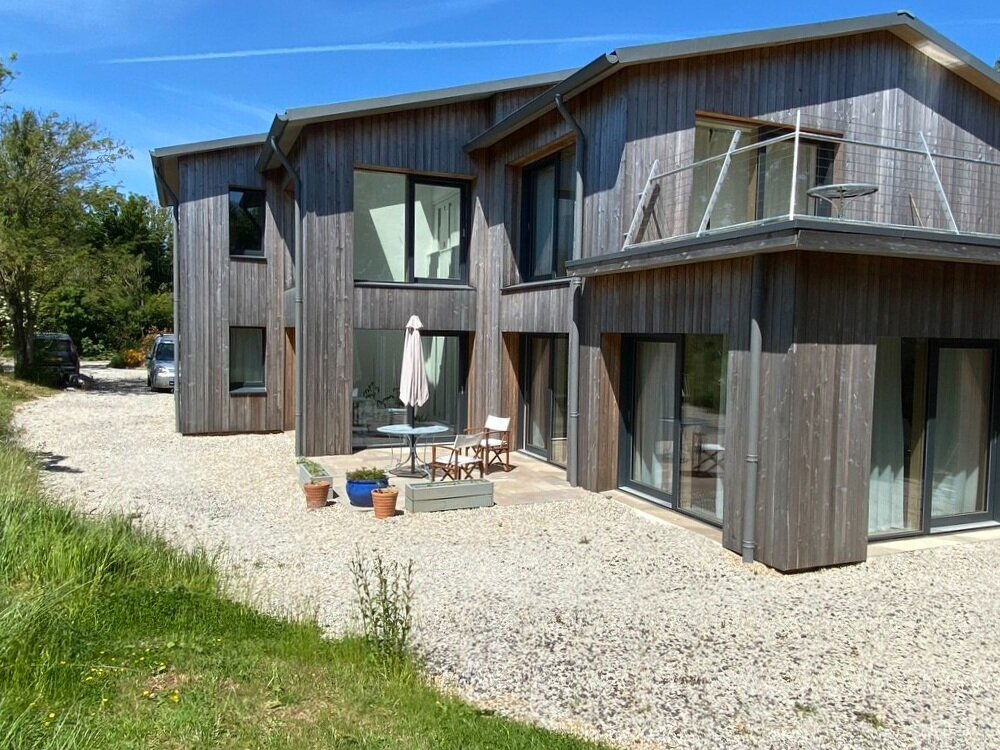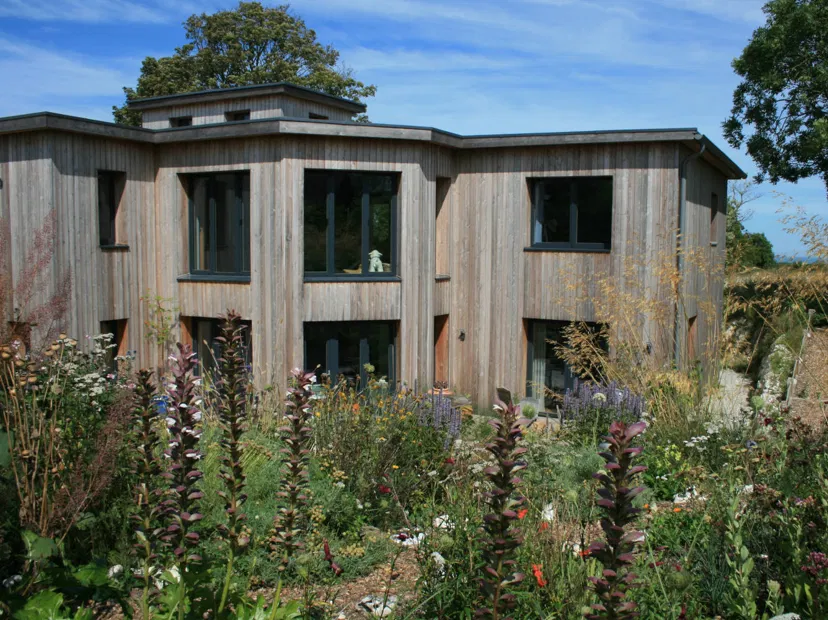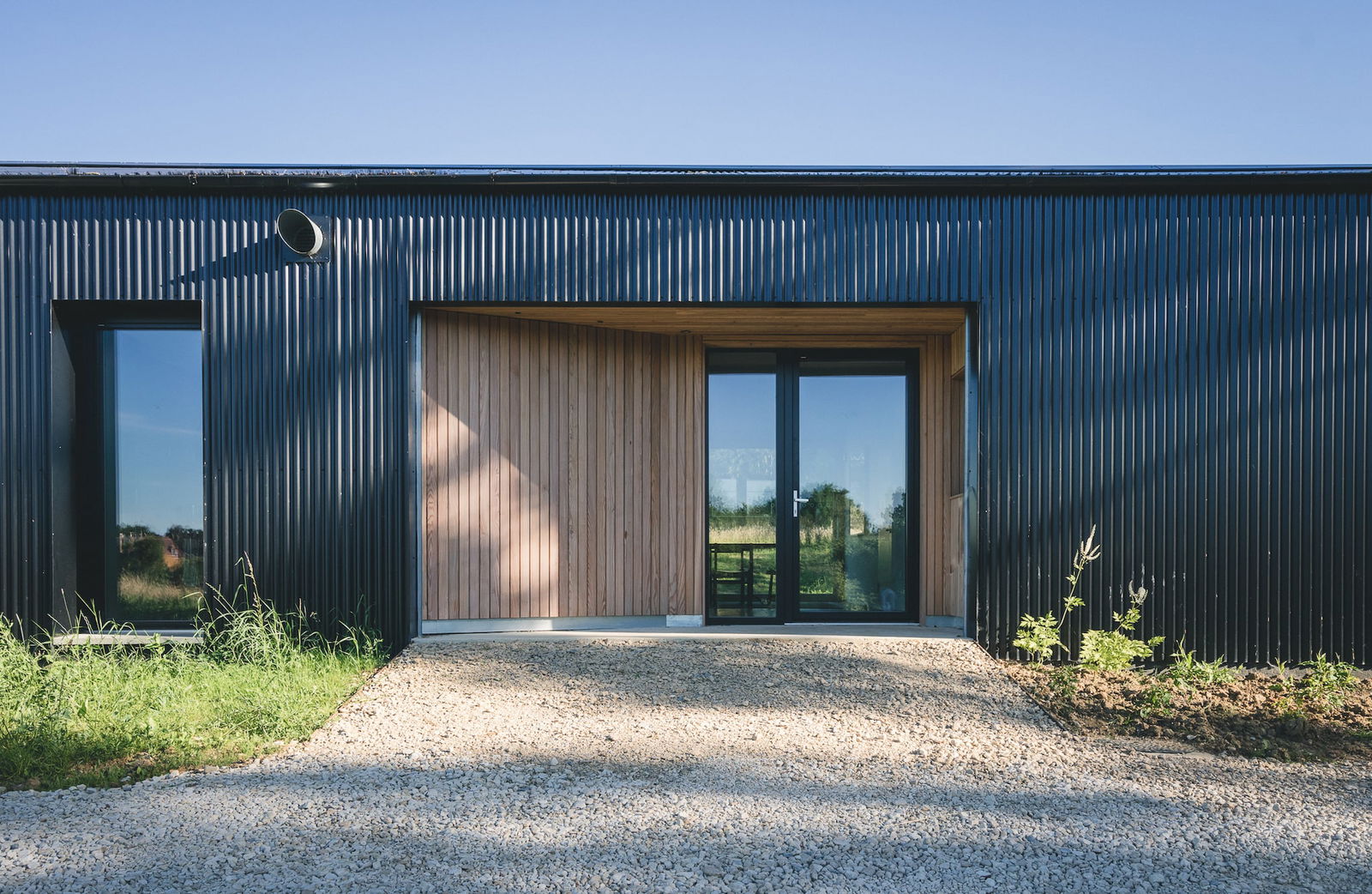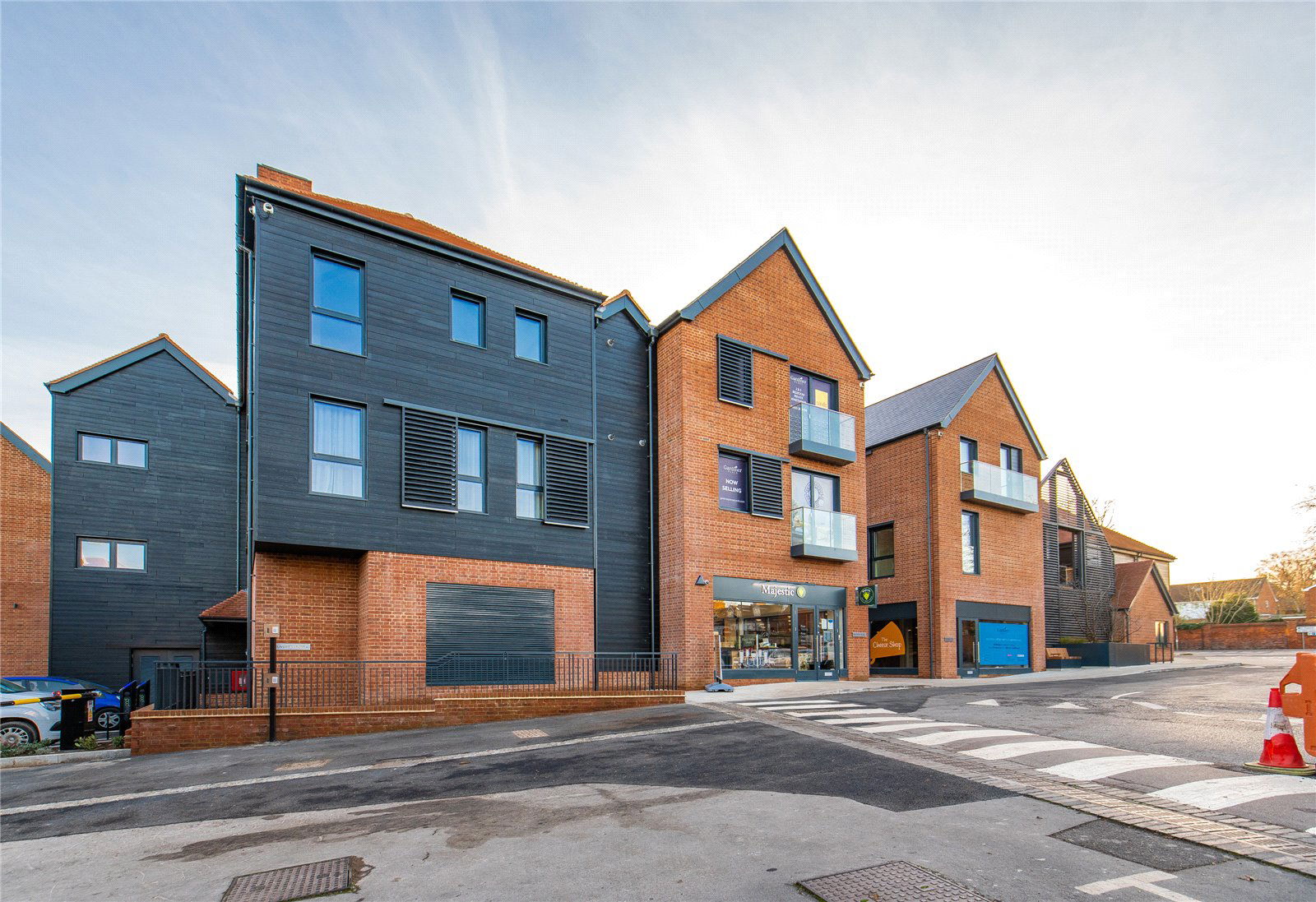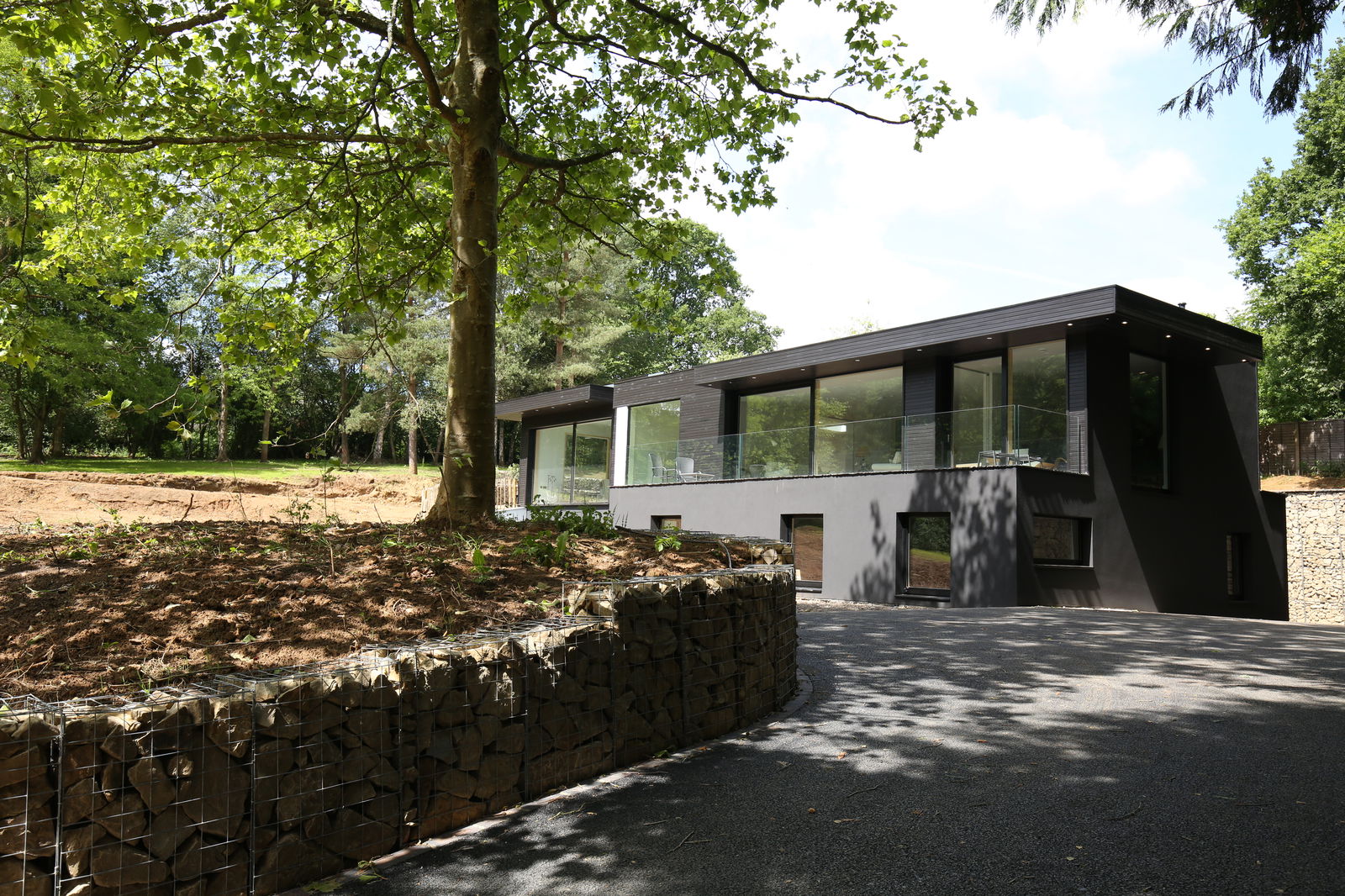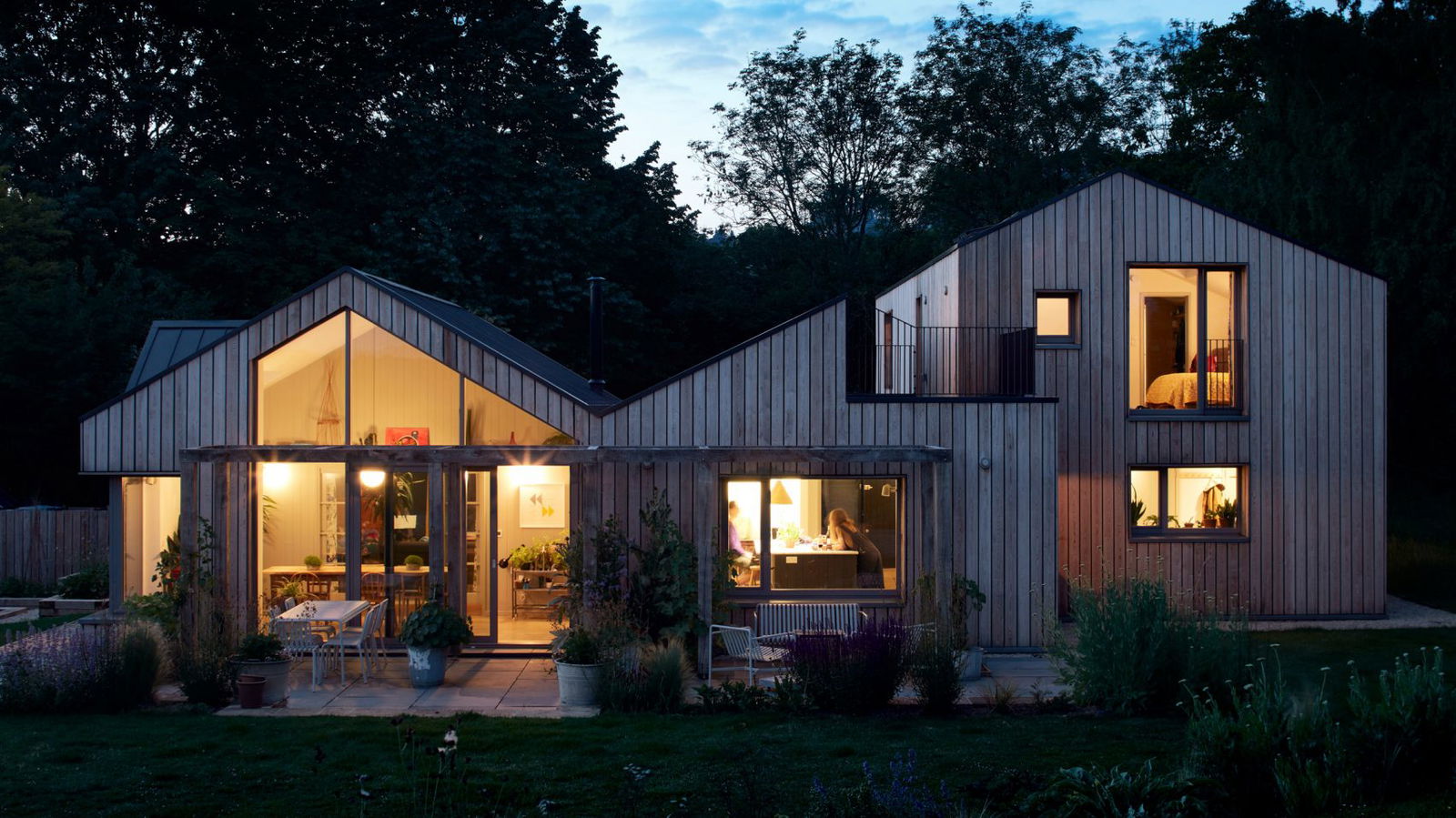What Makes a Window Passive House-Compliant?
- Whole-window U-values of ≤ 0.80 W/m²K
- Triple glazing with argon or krypton gas fills
- Airtight framing systems (Class 4 EN 12207)
- Optimised solar gain based on orientation
- Installation aligned with the thermal envelope
These criteria ensure the window contributes to the building’s overall energy performance, keeping heating demand below 15 kWh/m² annually.
Recommended Passive House Windows for New Builds
passive house certified KF 410
- Type: uPVC-Aluminium Composite
- U-value: As low as 0.63 W/m²K
Why It’s Ideal:
- Passive House certified
- Fully concealed locking with I-tec Secure
- Sleek design with narrow sightlines
Best For: Modern new builds with large south-facing glazing
AT-ECO Tip: This model pairs well with Internorm’s I-tec Shading for integrated solar control.
Internorm HF 410
- Type: Timber-Aluminium Composite
- U-value: From 0.62 W/m²K
Why It’s Ideal:
- Natural timber interior for a warm, breathable feel
- Extremely low U-values, even in large formats
- FSC-certified timber options
Best For: Eco-conscious clients prioritising both comfort and sustainability
AT-ECO Insight: Ideal for use in Passive House builds in rural or exposed locations.
Drutex Iglo Energy
- Type: uPVC
- U-value: From 0.6 W/m²K (whole window)
Why It’s Ideal:
- Seven-chamber profile for excellent insulation
- Affordable yet meets Passive House performance targets
- Available in a range of colours and finishes
Best For: Developers or homeowners seeking Passive House performance on a budget
AT-ECO Note: An excellent option for large-scale new build schemes aiming for low-energy certification.
Reynaers MasterLine 10
- Type: Aluminium
- U-value: Certified below 0.80 W/m²K (PHI-certified configuration)
Why It’s Ideal:
- Designed specifically to meet Passive House standards
- Combines slim sightlines with high thermal insulation
- High-performance triple sealing and foam insulation zones
Best For: Passive House new builds with a modern architectural finish
AT-ECO Suggestion: Perfect for projects requiring sleek aluminium aesthetics without sacrificing Passive House performance.
Schüco AWS 90.SI+ PH
- Type: Aluminium
- U-value: Passive House certified (as low as 0.80 W/m²K)
Why It’s Ideal:
- Ideal for large sliding and fixed elements
- Structural strength allows for oversized glazing
- High-end finishes and slim frames
Best For: Contemporary Passive House builds with panoramic views
AT-ECO Observation: Aluminium is often used on south-facing elevations with well-managed solar control.
Orientation Matters: Glazing Strategy by Elevation
| Orientation | Glazing Goal | Suggested Features |
|---|---|---|
| South | Maximise solar gain in winter | High g-value glazing (0.5–0.6) |
| North | Minimise heat loss | Low U-value, low g-value |
| East/West | Reduce summer overheating | Solar control coatings, medium g-value |
Passive House design isn’t just about product choice — it’s about how those choices are integrated. That’s why AT-ECO works closely with architects and self-builders to ensure each window performs exactly as intended.
Expert Installation Makes All the Difference
Even the most advanced window won’t deliver Passive House performance if installed poorly. Our FENSA-certified installers are trained in airtight, thermally bridge-free installations.
- Windows are placed in line with the insulation layer
- We use certified airtight membranes and tapes
- Junctions are modelled and verified using PHPP software when required

